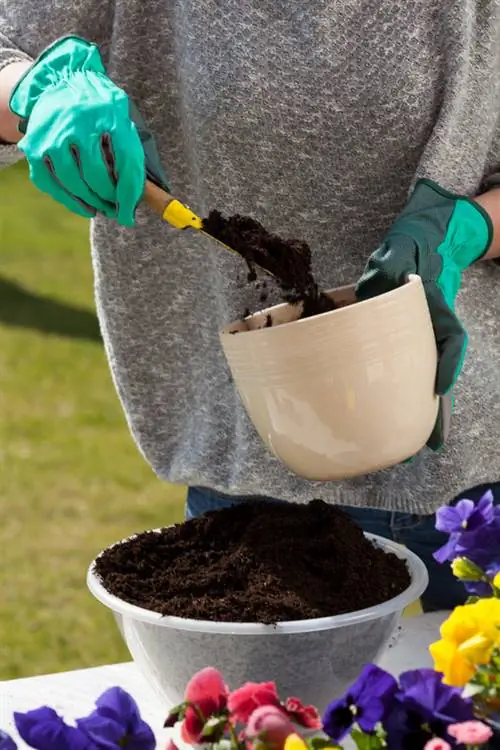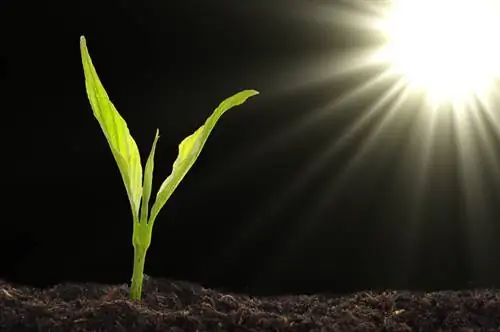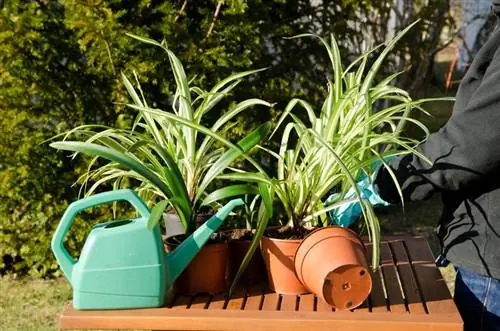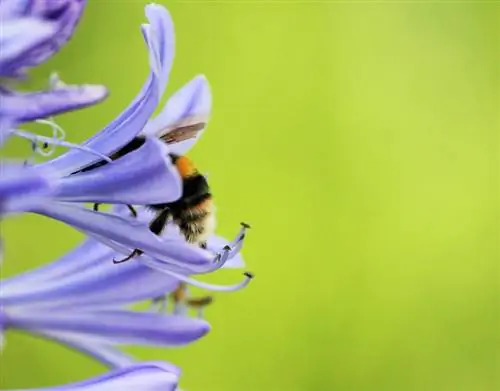- Author admin [email protected].
- Public 2023-12-16 16:46.
- Last modified 2025-01-23 11:20.
The African lily (Agapanthus) originally comes from higher mountain regions in South Africa. Therefore, this exotic plant does not need a consistently warm climate, but should be repotted regularly if it is cared for as a container plant.
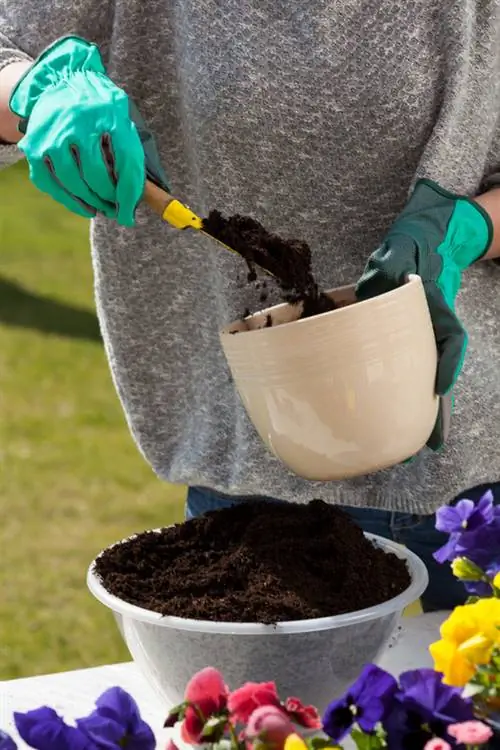
When and how should you repot the African lily?
To repot an African lily (Agapanthus), choose spring as the ideal time, use loose planting substrate, ensure sufficient watering and avoid waterlogging through drainage holes in the planter. Repotting promotes the growth and flowering of the plants.
Why the African lily needs to be repotted regularly
Regardless of whether it is a wintergreen or a leafy subspecies of Agapanthus: all African lilies reproduce not only through the formation of seeds, but also through the constant growth of the rhizome beneath the surface of the earth. To limit their size, African lilies are not cut above ground like other plants, but are propagated by dividing the thick tubers. This means that the African lily needs to be repotted every few years when the rhizome has replaced the space for potting soil in the pot.
The right time to repot the African lily
During the flowering period in summer, dividing the tubers and repotting them would dry out the plants and disrupt their growth energy. Therefore, the best time for repotting is in spring, when the African lilies form new leaves after overwintering and can be easily distributed among different planters. When repotting, ensure:
- a loose planting substrate in the pots
- sufficient watering in the first few weeks after repotting
- sufficient drainage holes in the bottom of the plant pots to avoid waterlogging
Effects of repotting on the plant
Sometimes it can be due to a planter that has become too narrow if your African lily on the terrace no longer blooms despite a sunny location. However, you should keep in mind that freshly divided African lilies for propagation purposes usually do not bloom again straight away. Only when the rhizome has grown well into the pot again after a year or two will the magnificent, spherical flowers appear again.
Tips & Tricks
Repotting is a good opportunity to ensure optimal fertilization of the African lily. Mix the loose potting soil with well-seasoned compost and you can use the following fertilizer doses more sparingly.

